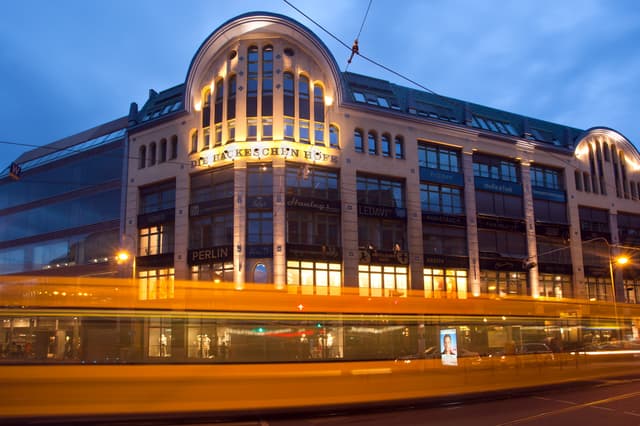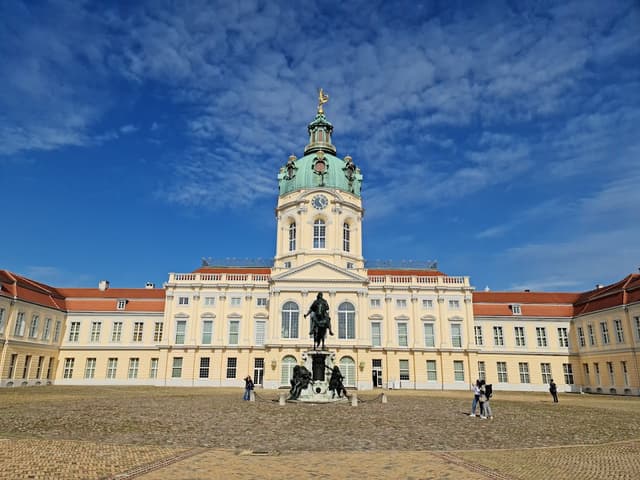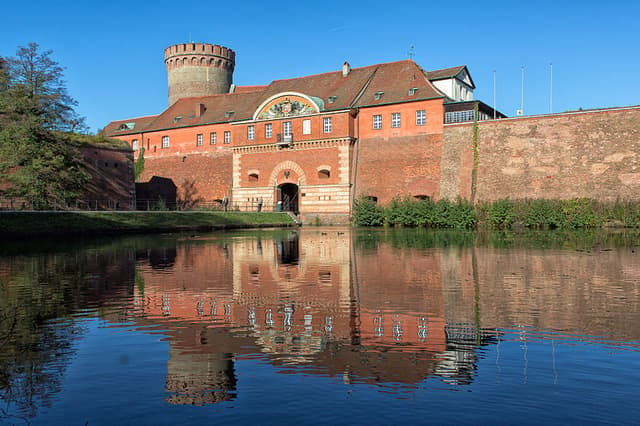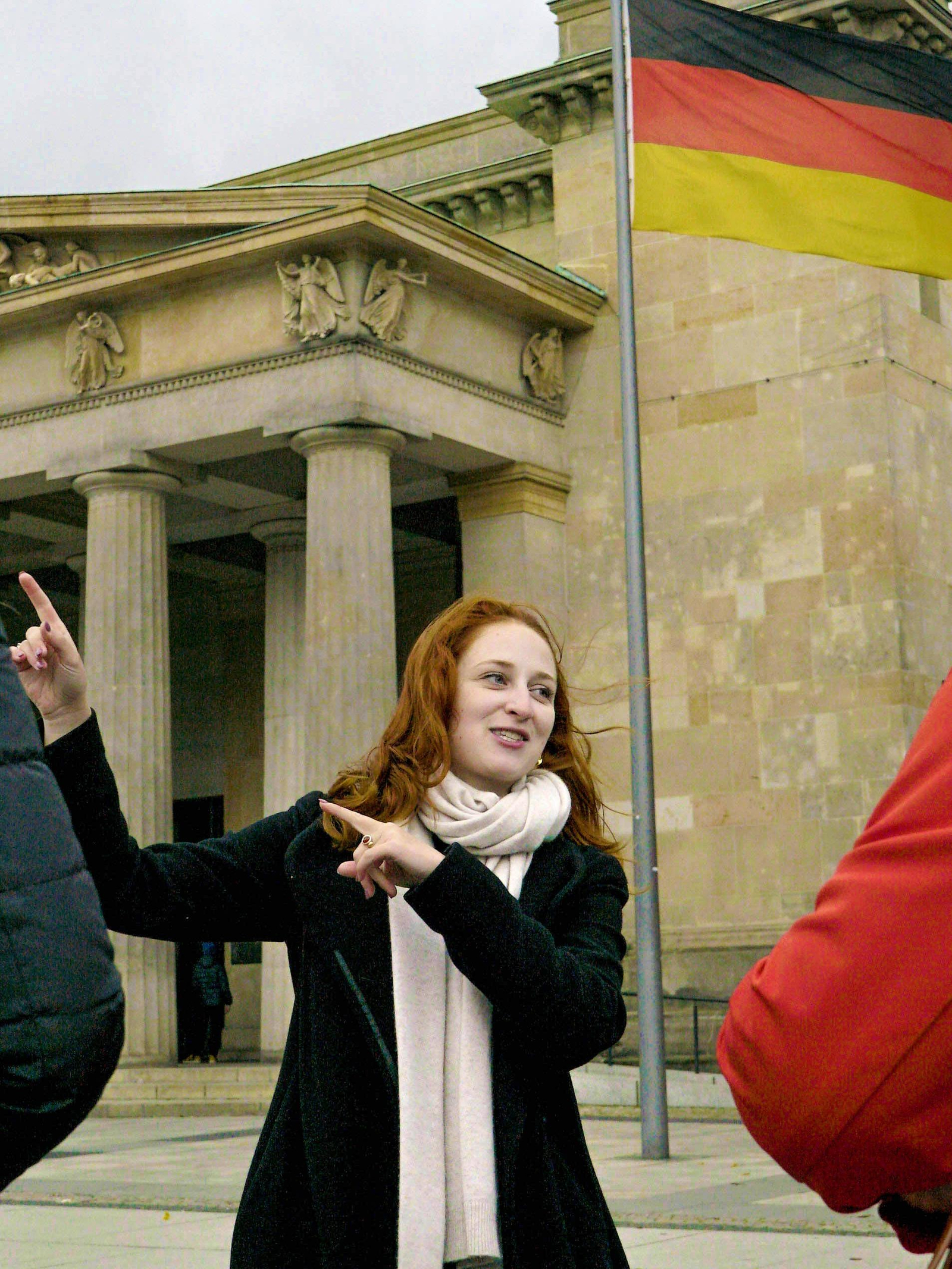Discovering Berlin's Christmas Markets: A Self-guided Adventure!

How to use this guide:
Hi! And welcome aboard! I hope you enjoy this Christmassy Adventure! Before you get started, here are some useful tips:
I've included fun stories and historical information in the text below. You can either read it in advance, or follow along as you make your way around the various Christmas Markets.
Use the map to quickly check out my suggestions for markets and other destinations to visit in Berlin this Christmas season.
I have sometimes left notes for various locations with extra details - select a location to see my additional notes!
A full list of my suggestions can be found at the end of this guide.
Introduction
You can begin your tour from anywhere, do it forwards or backwards! I suggest starting at the Hackescher Markt S-Bahn Station, or in Alexanderplatz.
Don't forget to wear warm clothes - it gets cold in Berlin!
The History of Christmas Markets
The roots of Christmas markets can be traced back to 1296, when the Duke of Austria granted merchants permission to hold a ‘December Market’ in Vienna to supply the population through the winter.
By 1310, the first recorded market appeared in Munich, followed by Dresden in 1434, and eventually Berlin in the late 1400s. By the mid-18th century, Christmas markets in Berlin were already touted as must-see attractions in travel guides. Initially, these markets focused on selling essential winter supplies such as preserved food and firewood.
Christmas Tree decorations in the Hackescher Höfe

Stroll through the Hackescher Höfe, a series of courtyards built in the early 20th century. Here you will find lots of local shops.
In 'Hof' (courtyard) number 5 you will find the shop Inge-Glas which sells Christmas ornaments. In 1831, the first glass ornaments became available in Berlin, but they were a luxury. Many families, especially those with limited means, created their own decorations or used handmade decorations. During wartime, Christmas gifts often reflected the times, with decorations featuring war-themed motifs including hand grenades, Zeppelins, rifles and aeroplanes. After World War II, in East Germany, Christmas decorations were made from whatever materials were available, including margarine!

Pro Tip:
To the north of the Hackescher Höfe on Sophienstraße on all weekends of Advent you can find a sustainable Christmas Market.
What you can buy at Christmas Markets
Traditionally Christmas Markets were for essential goods that people needed to make it through the harsh northern winters. You could often also find wooden Christmas pyramids (depicting various religious scenes) and hand-carved nutcrackers and other wooden toys, typically made in Nuremberg.
Today of course you can find plenty of different items at the markets, from Christmas decorations to hand-made local goods.
Marienkirche or St Mary's Curch

Advent, marking the start of the Christmas season, is a time of preparation and reflection. Historically you would also fast during Advent, eating only 1 meal a day and nothing with meat, although fish was allowed. The fast was broken on Christmas day with a feast, one of the reasons why Christmas dinners are notoriously big and often involve lots of roast meat! In Berlin during 1928 Berliners consumed 1 million geese over the festive season, the population at the time was 4 million people.
1. Rotes Rathaus Markt

Traditionally, there were no Christmas presents given on Christmas day, in order to emphasize the gift of Christ's birth. Instead, gifts were exchanged on December 6th, St. Nicholas Day. St Nicholas is an early version of Santa Claus, who was originally a Bishop living in Asia Minor (modern day Turkey), who died on the 6th of December in 343 and became the Patron Saint of School Children.
Saint Nicholas became the beloved figure who brought gifts to Children on the 6th of December and was later merged with other Christmas figures in the 19th century when Santa Claus as we know him today was first created.
Marx-Engels-Forum - Christmas in a Divided Germany

During the Cold War, East Germany rebranded Christmas as a ‘Socialist festival of peace,’ stripping away religious symbols. However, many traditions remained, albeit with altered names (Christmas bonuses became 'end-of-year bonuses', and Advent Calendars were called 'pre-Christmas Calendars').
The Berlin Wall made family gatherings difficult, but from 1963 to 1965, West Berliners were allowed to cross to celebrate Christmas. In 1963 one million passes were issued, allowing roughly half the population of West Berlin to travel into East Berlin for Christmas.
Lustgarten - A Royal Influence

In the heart of Museum Island, the Lustgarten was once the realm of Prussian kings. In the late 1700s, they sought to impose order on Christmas celebrations, by banning Christmas processions (people celebrating Christmas in the streets) and pageants. But the people of Berlin couldn't be stopped and they continued to celebrate Christmas out in the streets for many centuries to come.
2. Schlossmarkt

Since 1750, a market has existed near the Royal Palace or 'Schloss' in German. By the 19th century, it had grown immensely, attracting millions of visitors with its carnival atmosphere. Though it closed during World War II, it reopened and transformed, and was a popular Christmas market for West Berliners to visit when they came to East Berlin.
This Christmas market was one of the only places where you could find so-called tropical fruits in East Germany. Bananas and oranges, which weren't available in East Germany were sometimes sold under the table at this Christmas market.
Schinkel Bridge
After you've visited the Schloss Market, head south along the Unter den Linden crossing over the Spree River.
Will you experience a white Christmas in Berlin? The Institute of Meteorology has recorded weather patterns since 1908, revealing that only 24 out of the last 100 Christmases have been white. For it to count as a 'white Christmas' there has to be at least a 1cm blanket of snow on 2 out of the 3 Christmas days (Christmas Eve, Christmas Day and Boxing Day). It doesn't seem like a high bar!
When it does snow, sledding becomes a cherished pastime, especially on any of Berlin's Rubble Mountains. Berlin has very few natural hills, but 15 Rubble Mountains - made of debris left after WW2.
In January and February the wind often blows from the East and is very cold, with temperatures as low as -10 or -15 degrees overnight. Sometimes the Spree river freezes as well as other lakes in and around Berlin, making ice skating a popular activity.
Neue Wache - Christmas Through the Ages

During World War I, Christmas celebrations on the front in the trenches were portrayed as idyllic, but the reality was far different. Gifts were sent to the front lines, often out of necessity due to shortages of basic supplies. Soldiers celebrated Christmas around Christmas trees and read letters from home. Lighting the Christmas tree became a cherished moment for many soldiers during the war.
Even during the trials of World War II, Berliners found ways to celebrate. Soldiers made makeshift Christmas trees from whatever materials were available (like drilling holes into broomsticks and sticking in branches), and decorations often reflected the tumultuous times. The Nazi regime attempted to strip Christmas of its Christian meaning, branding it a ‘festival of war.’
The tradition of bringing tree branches into homes dates back to the 15th century as a symbol of hope for the New Year. If you didn't bring in new branches, it was said that you believed you would die in the next 12 months.
3. Bebel Platz Markt

This is the only Christmas market that requires a ticket. The tickets are €2 and part of the price is donated to local charities. You can book your tickets online here if the line at the ticket desk is too long:
There are several traditional Christmas foods you should try while enjoying the markets!
Mulled wine, or gluhwein is a traditional drink. Made by simmering red or white wine in fruits and spices, it tastes delicious.
For the more adventurous you can try Feuerzangenbowle, or 'Fire Tongs Punch', where a cone of rum-soaked sugar is set on a tray above a bowl of mulled wine and set on fire. As the rum burns it melts the sugar, dripping slowly into the wine underneath.
Stollen is another famous Christmas delicacy. A loaf of bread stuffed with marzipan and candied fruit and covered in icing sugar - it's a must-try this Christmas in Berlin. You should be able to buy it at most supermarkets, but try one from a bakery if you get the chance
The art of gingerbread making, or "Pfefferküchler," is a unique craft that has persisted through the ages. The biscuits are made from wheat and rye flour, sweetened with honey, and stored for several years to naturally ferment. There are many different kinds of gingerbread you can try, based on the combination of doughs, they each have a slightly different texture and flavour. Gingerbread making was still considered a specialist trade in East Germany until the fall of the Berlin Wall, definitely not one to miss!
Additional Christmas suggestions
More markets:



Other Christmassy things!
Great for buying some Christmas presents from Berlin:

Visit the zoo and see it lit up for Christmas!

See the special Christmas lighting display at the Botanical Gardens, it takes about an hour and a half to walk all the way around!

If you've enjoyed this guide, why not join me on a tour of Berlin?
I can also help you plan and organise your trip with a detailed, personalised itinerary, or with some additional recommendations.
The home for unique & authentic travel


